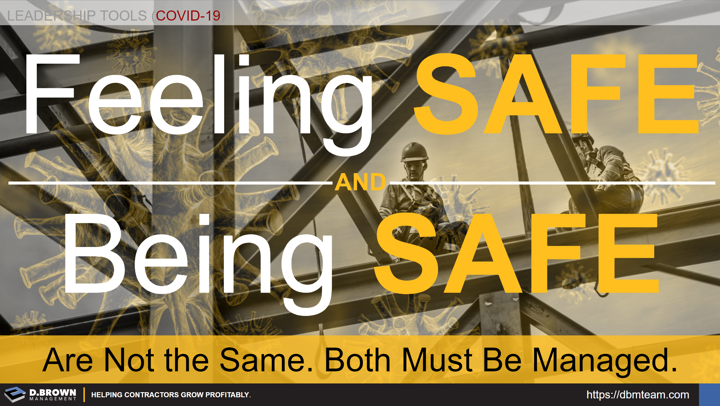Feeling safe and being safe are not the same and both must be managed to keep yourself and your team productive.
This applies to all areas of life and is in the spotlight for contractors managing COVID.
The #1 priority must be keeping yourself and those around you actually safe.
- There are lots of resources for jobsite safety protocols, including United Contractors, AGC, and many other industry associations.
- Most contractors that we have been talking to have done an amazing job adapting these protocols as appropriate to be specific to their facilities and projects.
- Contractors across the country have been fabricating their own sanitation and wash stations to better implement the safety controls.
A few things to keep in mind when it comes to being safe around COVID-19:
- There are a few knowns but many unknowns. Accept that and know that everyone is learning and evolving every week.
- As with any risk, there are probabilities associated with COVID-19 and that math is very different in different parts of the country, with projects, and individuals. Do your own math but know the limits of the underlying data and facts.
- As with all rapidly evolving new situations, there is a ton of misinformation. It will be important for you to have great filters and analysis tools to determine what you actually act upon.
When you've done what you can do to be safe, remember that is only the foundation. The critical aspect for productivity is ensuring that everyone feels safe. Right or wrong, the fact is that we live in a time where it is common for people to associate feeling unsafe or threatened with words that are used and body language.
- Communication, comfort, and confidence are all related. Increase your communication about what you are doing and be forthright about what you don't know.
- Make safety visible. This is a critical part of communication. This can include visible cleaning supplies, signage, and people routinely cleaning.
- Make incident responses highly visible, including protocols for contact tracing and quarantining. These have to be balanced with not overreacting. As an example, if someone is potentially exposed in one area of the building, how much of the project will need to be shut down and for how long?
Know that there are people that have strengths in each of these areas. It's rare to have someone equally good in each area. Collaboration in leadership and communication is the key to success.
You can only take safety so far through compliance. Safety must be built into your culture.

